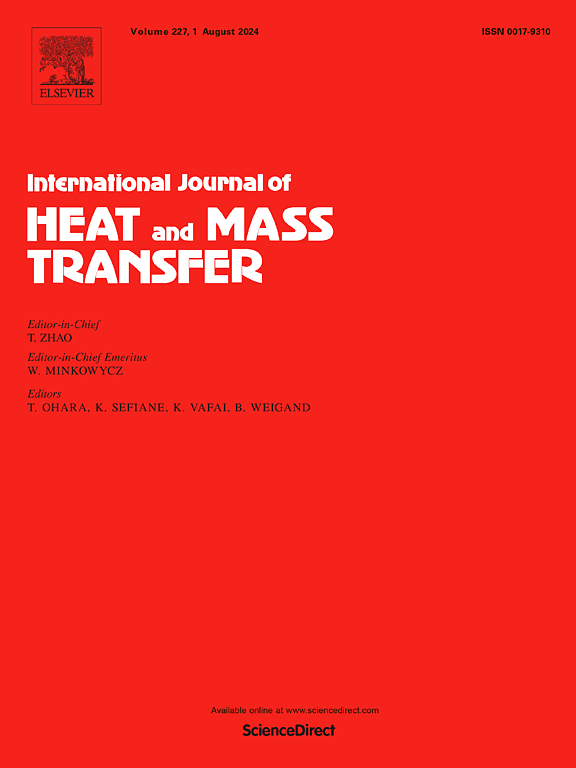Coupling effects among viscosity, viscous dissipation and convective heat transfer in the microscale flow of polymer melt
IF 5.8
2区 工程技术
Q1 ENGINEERING, MECHANICAL
International Journal of Heat and Mass Transfer
Pub Date : 2024-12-02
DOI:10.1016/j.ijheatmasstransfer.2024.126491
引用次数: 0
Abstract
The coupling effects among viscosity, viscous dissipation, and convective heat transfer during the polymer melt micro-molding process, influenced by microscale effects, notably impacted the melt's flow characteristics. The scarcity of theoretical exploration into these coupling effects has hindered the evolution of micro-molding. This research initially established the heat transfer coefficient equation at the microscale via experimental approaches, and by integrating multiphysics coupling theories, established a coupled mathematical model encompassing viscosity, viscous dissipation and convective heat transfer at the microscale. Then we computed and analyzed the melt flow characteristics within microchannels of varying characteristic dimensions and validated the temperature variations of the melt along the flow direction through experiments. The results showed that considering coupling effects resulted in a temperature rise along the flow direction that closely matched experimental data, with discrepancies below 0.5 °C, whereas ignoring these effects led to a maximum deviation of up to 2.4 °C. Analysis of velocity, viscosity, and viscous dissipation across radial section revealed that the discrepancies between ignoring and considering coupling escalated with decreasing dimensions. The maximum deviations for velocity, viscosity, and viscous dissipation in PMMA(polymethyl methacrylate) were 19.47 %, 10.71 %, and 39.28 %, respectively. These results emphasized the necessity of considering coupling effects when polymer melt micro-molding.
聚合物熔体微尺度流动中粘度、粘性耗散和对流换热的耦合效应
聚合物熔体微成型过程中粘度、粘滞耗散和对流换热三者之间的耦合效应受微尺度效应的影响,对熔体的流动特性有显著影响。由于缺乏对这些耦合效应的理论探索,阻碍了微成型的发展。本研究通过实验方法初步建立了微尺度下的换热系数方程,并结合多物理场耦合理论,建立了微尺度下包含粘性、粘性耗散和对流换热的耦合数学模型。然后计算并分析了不同特征尺寸微通道内熔体的流动特性,并通过实验验证了熔体沿流动方向的温度变化。结果表明,考虑耦合效应导致沿流动方向的温升与实验数据非常吻合,误差在0.5℃以下,而忽略耦合效应导致的最大误差可达2.4℃。对径向截面上的速度、粘度和粘性耗散的分析表明,忽略和考虑耦合之间的差异随着尺寸的减小而增大。PMMA(聚甲基丙烯酸甲酯)的速度、粘度和粘性耗散的最大偏差分别为19.47%、10.71%和39.28%。这些结果强调了聚合物熔体微成型时考虑耦合效应的必要性。
本文章由计算机程序翻译,如有差异,请以英文原文为准。
求助全文
约1分钟内获得全文
求助全文
来源期刊
CiteScore
10.30
自引率
13.50%
发文量
1319
审稿时长
41 days
期刊介绍:
International Journal of Heat and Mass Transfer is the vehicle for the exchange of basic ideas in heat and mass transfer between research workers and engineers throughout the world. It focuses on both analytical and experimental research, with an emphasis on contributions which increase the basic understanding of transfer processes and their application to engineering problems.
Topics include:
-New methods of measuring and/or correlating transport-property data
-Energy engineering
-Environmental applications of heat and/or mass transfer

 求助内容:
求助内容: 应助结果提醒方式:
应助结果提醒方式:


